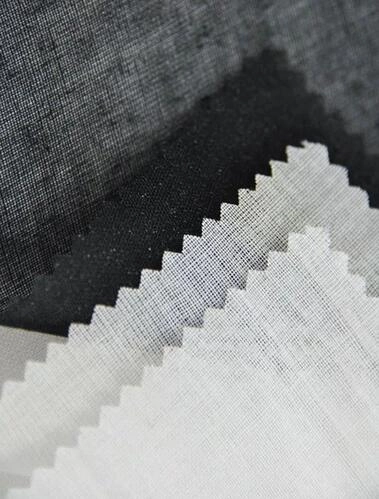Fusible Lining is an essential garment fabric that helps to keep your clothing stiff, crisp, and shaped. It can also help to make your seams strong and durable, and can be used for a variety of purposes in the sewing process. Fusible interlining is often called for in pattern instructions for clothing, especially when you need the fabric to be stiff and structured. You can use a wide range of different types of interfacing, and you should always follow the manufacturer's directions. Most bolts of interfacing come with instructional sheets, and it never hurts to do a test swatch first, so you know what the final results will be like before you get started on your actual project.
Most fusible interlining is made of cotton, polyester, or polyurethane. It has a thin coating of hot melt adhesive on one side and a layer of heat-resistant fiber on the other. This means that when you press the two together, the adhesive sticks to the fabric and melts into it. You should never iron the interfacing directly because it could scorch and become hard or sticky. Instead, press with a cloth to prevent direct contact with the ironing surface.
Woven interlining: This is made of a woven fabric that has a definite warp and weft. It should be cut with the grain for best results. This is used in a variety of garments, from pants and shirts to draperies and home furnishings. Woven interfacing is also great for embroidery because it provides stability to the fabric and helps it hold its shape.
Non-woven interlining: This is made from fibers that are not woven, and it is very thin. It is usually made from recycled materials, and it is much cheaper than woven interlining. It is not as durable, however, so it is best used in lightweight garments or projects that don't require a lot of strength.
Powder dot fusible interlining: This is the most common type of fusible interlining, and it has a layer of adhesive on both sides. The adhesive particles are sprayed onto the interlining, and then embossed with pits on a roller. When you apply the correct temperature and time, the adhesive will bond to the fabric.
Steaming the interface: This is not a recommended method, but it can work in a pinch. If you have a small mistake that you need to fix, steam the interfacing with its adhesive side up for a few seconds. The heat will soften the glue and make it easier to peel off.
If you want to get into garment sewing, it is very important to learn about all the different types of fabrics and how to use them. If you are not careful, you will end up with a garment that is not as durable or attractive as it could have been. With a little knowledge, you can easily find the right fabrics and accessories for your next clothing project.

